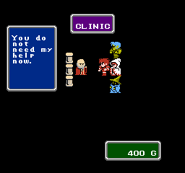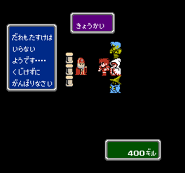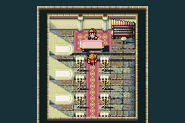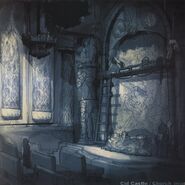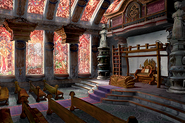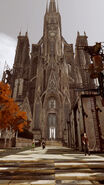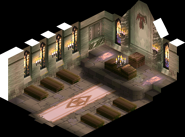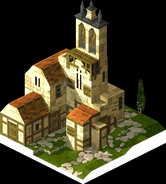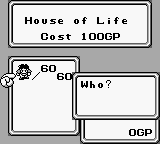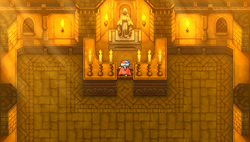
The Sanctuary at Altair.
As you pray, a warm light suddenly envelops you and a voice overflowing with compassion rings in your ears: "Soul that wanders in death, return now from that distant land where sorrow and darkness hold sway!"
Final Fantasy II
A church (きょうかい, Kyōkai?), clinic, sanctuary, revive pool, or House of Life, is a means of reviving party members in the first three Final Fantasy games. Reviving characters in a church usually costs a small fee. Later, Phoenix Downs and Raise became the main sources of revival, and so the concept of churches or revive pools were scrapped except as plot devices.
Appearances[]
Final Fantasy[]
Churches (Clinics in the North American NES version) are found in every town and village on the world map except Melmond. The cost of reviving a party member increases as the player progresses through their adventure. Talking to the priest will make two angels descend upon the fallen party member(s) and revive them, at which point the angels will depart.
Final Fantasy II[]
Sanctuaries are found in most towns and villages on the world map. They appear as unmarked buildings with a statue of a goddess inside. Examining the statue will revive all KO'd party members in the party with 1 HP at no cost. Two angels will descend upon the fallen party member(s) and revive them, at which point the angels will depart. The FMV opening also briefly features a church steeple, which is seen collapsing during the Fall of Fynn.
Final Fantasy III[]
Revive pools are found in many towns, areas, and castles in the world map. They usually appear along with healing springs and revive party members without cost.
Final Fantasy VII series[]
Sector 5 Slums Church is an important location usually associated with Aerith Gainsborough, as she tends flowers here. The church is situated on the outskirts of the Midgar Slums, and appears abandoned.
Final Fantasy IX[]
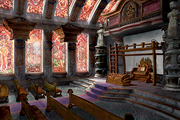
The church in Lindblum.
Several of the major cities include chapels. Alexandria's chapel is near the western dock, where moogles Kupo, Stiltzkin, and Artemicion make appearances here. The player can find a treasure by climbing the steeple and the girls who play jump rope will move here later on.
The chapel in Lindblum is located in the Business District and is currently undergoing maintenance. During the first visit to Lindblum, the player can pick up a Leather Plate here.
Other locations, such as Gizamaluke's Grotto, Esto Gaza, Conde Petie, and the Cleyra Settlement, seem to be religious centers. There are no house chaplains offering services of game-saving or character revival, but the empty chapel in Alexandria holds the first location where one can use a moogle to save one's game, use a Tent, or begin the Mognet sidequest.
Lightning Returns: Final Fantasy XIII[]
The grand Luxerion Cathedral is dedicated to the worship of Bhunivelze by the Order of Salvation. Its underground corridors serve as the final dungeon.
Final Fantasy XIV[]
The Church of Saint Adamama Landama in Eastern Thanalan appears a few times in A Realm Reborn main scenario quests.
In Ishgard, players can visit the Saint Reymanaud Cathedral in the Pillars district, though it doesn't serve any gameplay function outside a few side quests. The Vault is also a large cathedral that appears as a dungeon.
Final Fantasy Tactics[]
Ramza prays in a church in Zeltennia Castle and meets up with his childhood friend Delita, but their conversation is interrupted by Zalmour, tasked by the church to exterminate heretics. A battle takes place outside the church, the battlefield is called Outlying Church.
The Final Fantasy Legend[]
When a character's HP hits zero, the character is dead. Dead character(s) can be revived with 1 HP at a House of Life as long as they have a heart remaining. Player's can see this by press the Select button to see each character's Heart, but once they have run out of hearts, that character is permanently dead, but the player can recruit a new character at the guild.
Gallery[]
Etymology[]
A church building, often simply called a church, is used for religious activities, particularly worship services.

